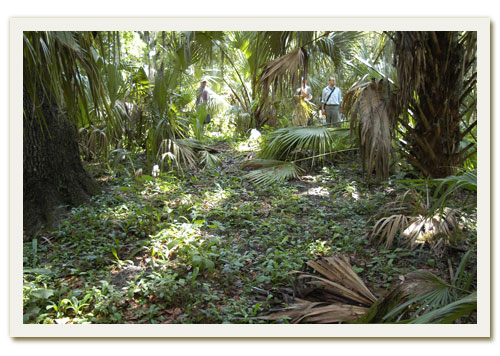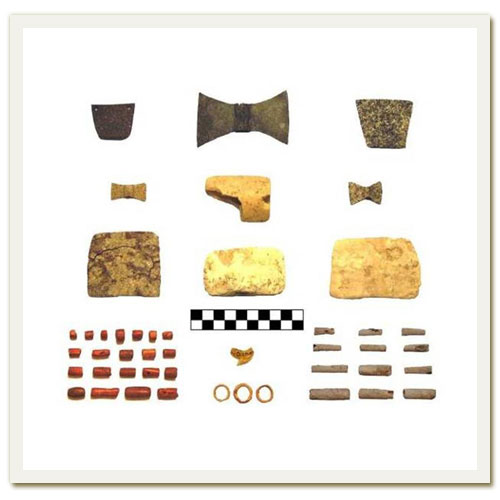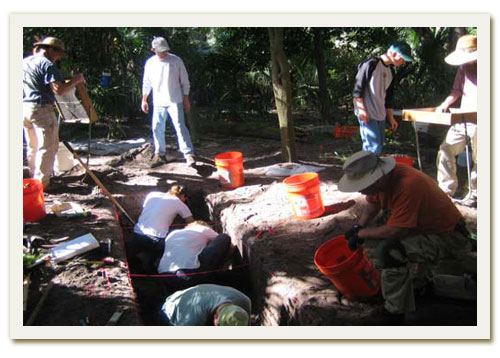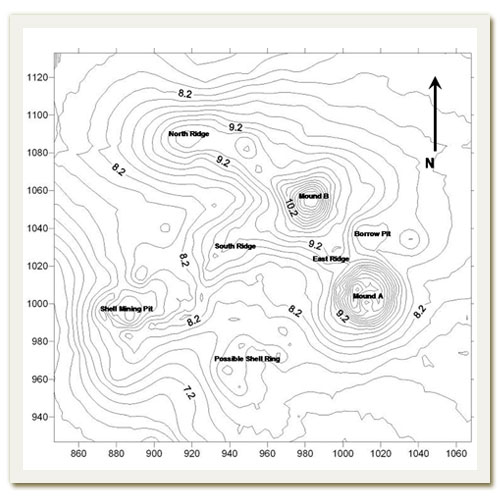
Since 2004 , Jon Endonino has been investigating sites in the Lake Monroe Conservation Area (LMCA) of the St. Johns Basin in southwest Volusia County. The Thornhill Lake Archaeological Research Project has produced important new data related to the emergence of mortuary mound construction during the Mount Taylor period. When Clarence B. Moore excavated at the Thornhill Lake Complex in the late 19th century, he noted the virtual absence of ceramics in the mounds and the unusual nature of the artifacts he found associated with burials, namely bannerstones, stone pendants, and polished stone beads (below). In the 1950s, John Goggin would conclude that these exotic items were “holdovers” or heirloom items that were interred in mounds of the subsequent St. Johns I period. The prevailing cultural evolutionary paradigm of the middle-20th century effectively precluded the possibility that the mounds could be Archaic and thus they were not recognized as such.

Jon and a team of volunteers (below) conducted test excavations at Thornhill Mounds to expose the subsurface stratigraphic record of habitation and subsequent mound construction. Jon’s efforts show that the Thornhill Lake Complex is among the oldest mortuary mound complexes yet known in Florida, dating between 5600 and 4600 years cal. B.P. These mounds are thus part of the growing record of Archaic-period monuments in the American Southeast. The Thornhill Mounds offer the additional insight that major transformations in mound construction coincided with long-distance connections that united Florida indigenes with neighbors in Georgia and Mississippi.

Field research at the Thornhill Lake Complex has been supported by grants from Florida Department of State and the American Philosophical Society. Jon Endonino is completing his dissertation on the topic, with additional support from the Hyatt and Cici Brown Endowment.

Read Jon’s most recent report on Thornhill in The Florida Anthropologist